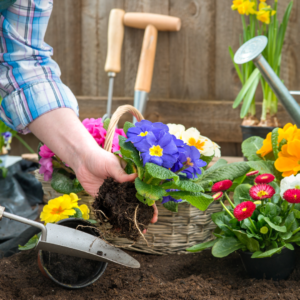Welcome to our comprehensive seasonal planting guide, designed to empower gardeners of all levels to cultivate thriving gardens throughout the year. In this guide, we’ll explore tailored recommendations for each season, catering to different USDA Plant Hardiness Zones. From the frost-kissed landscapes of winter to the sun-drenched days of summer, discover how to harness the unique characteristics of each season to maximize your garden’s potential.
Understanding Climate Zones
Before we embark on our planting journey, let’s familiarize ourselves with the USDA Plant Hardiness Zones. These zones provide invaluable insights into the climatic conditions of specific regions, guiding gardeners in their selection of suitable plants. Each zone is characterized by a range of average annual minimum temperatures, influencing the types of crops that can thrive in those environments. By identifying your zone, you can make informed decisions about the plants best suited to your local climate and growing conditions.
Zone 3-6
– Winter temperatures can plummet well below freezing, with short growing seasons.
– Recommended Winter Crops: Hardy vegetables like kale, Brussels sprouts, and leeks thrive in the cold and can be harvested well into winter.
– Spring Recommendations: Start seeds indoors for warm-season crops like tomatoes, peppers, and eggplants, as outdoor planting may be delayed due to lingering frost.
– Summer Suggestions: Focus on quick-maturing varieties of tomatoes, cucumbers, and squash to capitalize on the limited warmth of the growing season.
– Fall Planting Ideas: Sow cold-hardy crops such as spinach, lettuce, and radishes in late summer for a late fall harvest.
Zone 7-9
– Moderate temperatures with distinct seasons, allowing for extended growing periods.
– Winter Planting Options: Plant cold-tolerant vegetables such as carrots, beets, and Swiss chard in late fall for winter harvests.
– Spring Planting Guide: Sow early-maturing crops like peas, lettuce, and radishes as soon as the soil can be worked, typically in late winter or early spring.
– Summer Planting Tips: Cultivate warm-season favorites like tomatoes, peppers, and squash, ensuring adequate moisture and sun protection during the hottest months.
– Fall Recommendations: Continue planting cool-season vegetables such as broccoli, cauliflower, and kale, taking advantage of the mild temperatures for extended harvests.
Zone 10-13
– Warm climates with year-round growing seasons and minimal risk of frost.
– Winter Planting Opportunities: Plant heat-loving crops like tomatoes, peppers, and beans throughout the winter months for continuous harvests.
– Spring Planting Strategies: Start seeds indoors for tropical crops such as sweet potatoes, melons, and cucumbers, transplanting them outdoors after the last expected frost.
– Summer Planting Considerations: Focus on heat-tolerant varieties of vegetables and herbs, providing ample water and shade during the hottest part of the day.
– Fall Planting Possibilities: Sow fast-maturing greens like arugula, spinach, and mustard for cool-season harvests, enjoying an abundance of fresh produce throughout the winter.

Educational Insight
Understanding climate zones is crucial for successful gardening, as it helps gardeners select plants that can thrive in their local environment. However, it’s important to note that zoning isn’t an absolute barrier; with careful planning and innovative techniques, it’s possible to grow a wide range of plants outside their designated zones. Strategies such as microclimates, protective structures like greenhouses or cold frames, and selecting cold-hardy or heat-tolerant varieties can extend the range of crops that can be grown successfully. By embracing these principles and adapting to the unique conditions of your garden, you can unlock a world of possibilities and enjoy a diverse and abundant harvest year-round.
Additional Insights
1. Importance of Crop Rotation:
Crop rotation is a fundamental practice in sustainable gardening, helping to maintain soil fertility, prevent pest and disease buildup, and optimize yields. By rotating crops annually, you can mitigate nutrient depletion, break pest and disease cycles, and improve overall soil health. Consider dividing your garden into different beds or plots and rotating crops based on their families or nutrient needs to maximize productivity and minimize problems associated with continuous cropping.
2. Benefits of Companion Planting:
Companion planting involves strategically planting different species together to enhance growth, deter pests, and improve overall garden health. By selecting compatible plant combinations, you can increase pollination, repel pests, and improve soil fertility naturally. Experiment with companion planting techniques such as intercropping, trap cropping, and beneficial plant associations to create a harmonious and resilient garden ecosystem. From marigolds deterring nematodes to basil enhancing tomato flavor, the possibilities are endless when you embrace the principles of companion planting in your garden.
Conclusion
With the insights gained from this comprehensive seasonal planting guide and additional educational insights, you’re equipped to embark on a journey of discovery, innovation, and growth in your garden. By leveraging the unique characteristics of each season, understanding the importance of climate zones, and embracing sustainable gardening practices, you’ll unlock the full potential of your garden and enjoy a bountiful harvest year-round. Embrace the joy of growing your own food, cultivate a deeper connection to nature, and savor the fruits of your labor with every harvest. Happy gardening!

Summary
Our comprehensive seasonal planting guide provides tailored recommendations for gardeners of all levels, catering to different USDA Plant Hardiness Zones. From frosty winters to sun-soaked summers, each season offers unique opportunities for cultivating a thriving garden. Explore expert insights on selecting the right crops for your climate zone, embracing sustainable gardening practices like crop rotation and companion planting, and maximizing your garden’s potential year-round. With careful planning and innovative techniques, you’ll unlock a world of possibilities and enjoy a bountiful harvest season after season.
Check out 15 Gardening Tips

